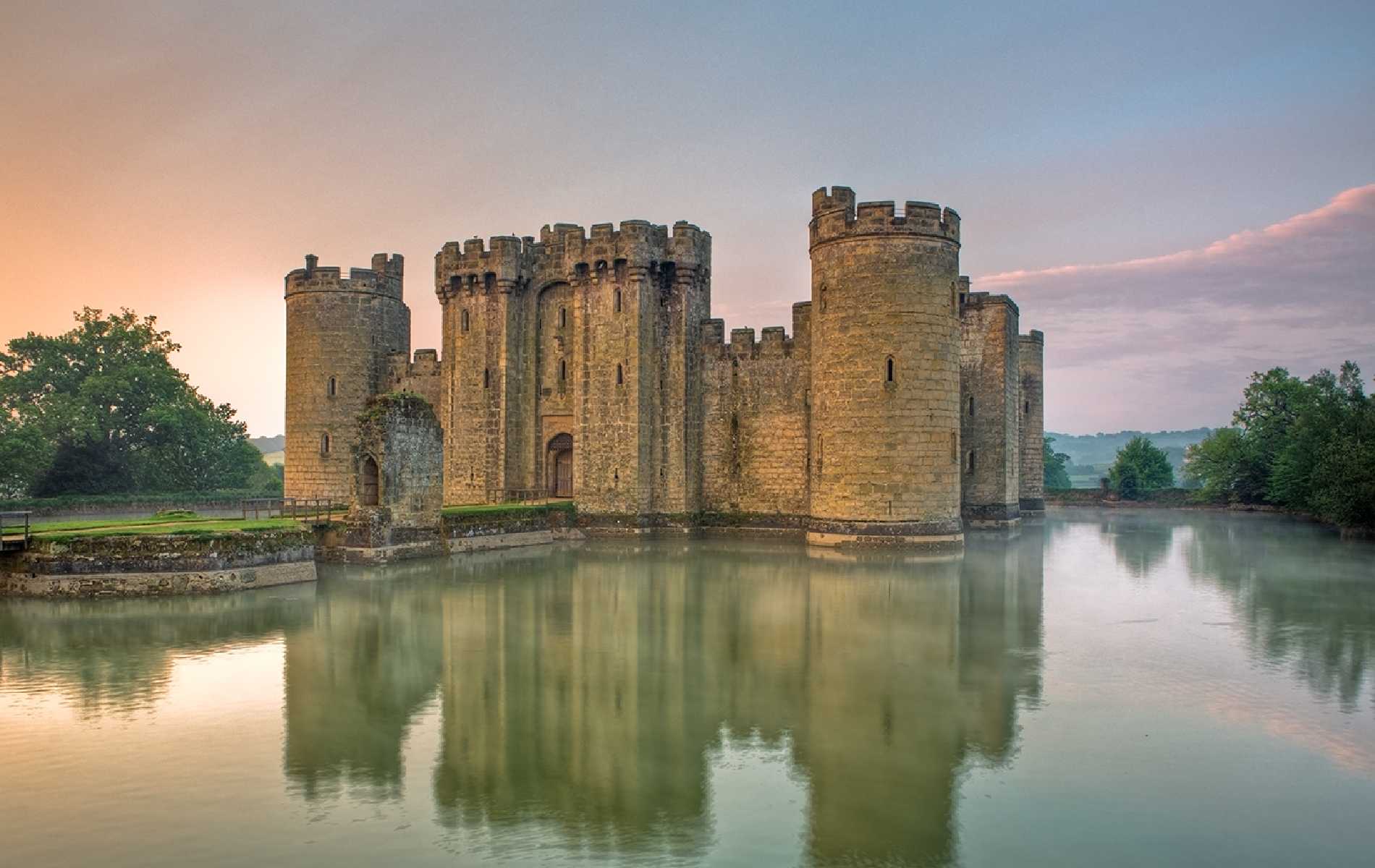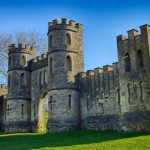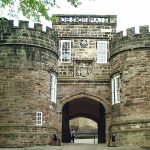There are so many different castles in England, it’s hard to choose which ones the best English castles are! From Oxford to Durham, the following are some of the best English Castles and what makes them so special.
Table of Contents
1. The Tower of London
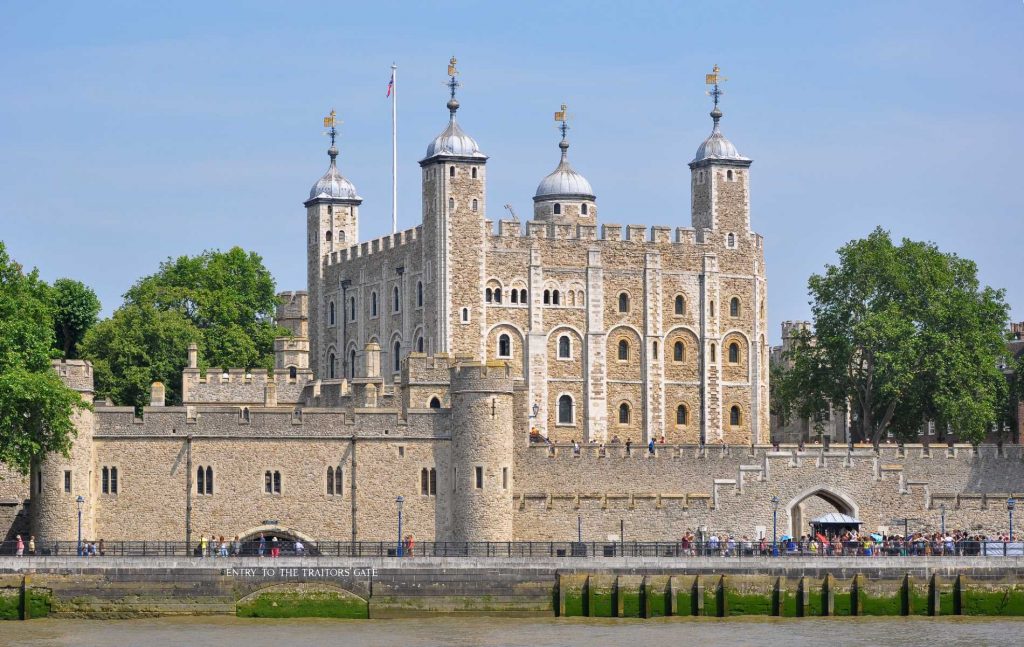
The Tower of London is a landmark building in the United Kingdom, with their history tracing back to 1066. It’s interesting to note that this fortress has an important role in the British monarchy and military.
The tower was used as a prison by Henry I, where he imprisoned Earl Robert of Essex, Roger Bigod (the grandson of one of King John’s barons), and Ranulf le Meschin, who were planning to turn England into an Angevin Empire.
It was also used as a prison for Royalty during different time periods such as holding Queen Matilda II and Princess Margaret from Scotland under house arrest.
2. Alnwick Castle
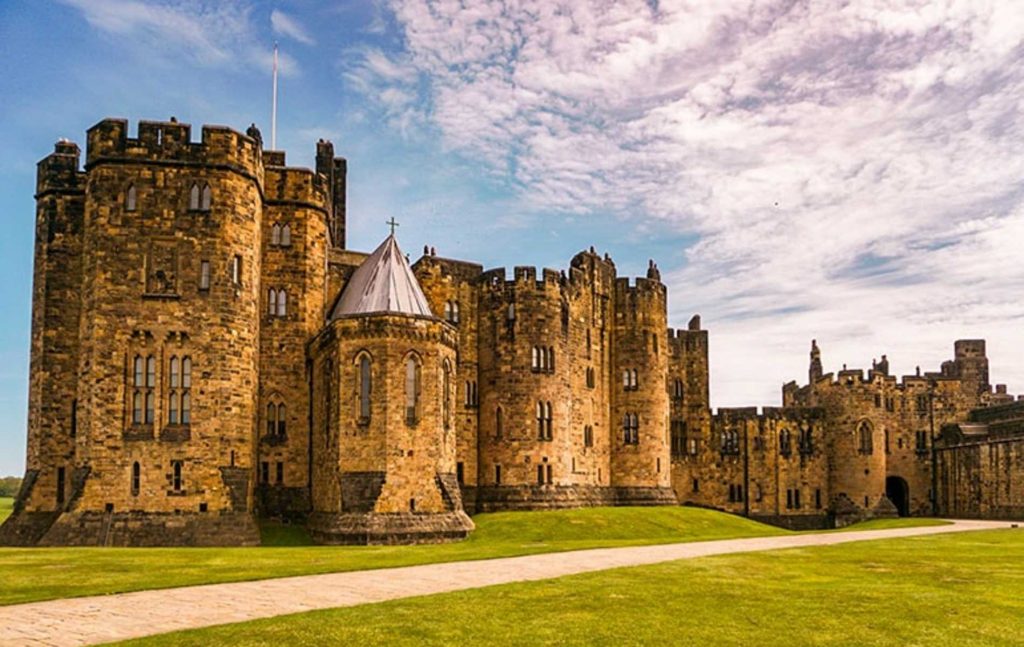
Alnwick castle has a magnificent and picturesque setting, striking from afar on its hill. The original castle was built by the de Brus family who were powerful Marcher Lords, controlling most of modern Northumberland from their base at Alnwick Castle. The present castle is much larger and dates from around 1136 when it was rebuilt by Henry II, but parts will date back as far as 1096 when it was first mentioned in documents during Edward I’s campaign against Scotland.
The Castle is set within 90 acres of beautiful and peaceful parkland, which includes gardens and an excellent Visitor Centre with audio visual displays. In the Keep is the unique collection of one of the most important private collections of arms. The Castle also has its own private brewery producing Alnwick Bitter and other drinks, including a traditional ginger beer, which are available to buy in the shop. There is also a tearoom with lovely views over the park.
The Castle remains in use by Northumberland’s Duke and family as private residence and there are displays in several of the rooms; some rooms are also open to tourists from April to October. The Castle and grounds are very popular for events, such as medieval banquets, weddings and the place where many films have been made (including Harry Potter).
3. Arundel Castle

Arundel Castle is magnificent in its scale and setting. It is situated on a high point with a fine view over the River Arun estuary. The oldest sections of the Castle date from the early 11th century to defend against invasion during William 1’s reign, although some walls may be earlier.
The Castle is set within 80 acres of wooded grounds, including two lakes, and boasts its own herd of Red Deer. There are also several other attractions in the grounds including the Priory Church, a Heritage Centre and a large sculpture park which includes a giant stainless steel model of the human brain.
Arundel Castle is open from April to September and has full disabled access. The café is situated within some ancient buildings on site (with furniture sourced from the grounds of other large houses across Sussex) and sells tea, snacks and treats for dogs! Events are also held at Arundel Castle throughout year such as medieval banquets, fireworks in August, ghost walks throughout October plus many more events.
4. Bodiam Castle

Bodiam Castle is unique due to its complete lack of defensive fortifications, making it a castle truly built for pleasure. The castle is unusual in that it has no windows. Whether this was for privacy or to keep out the cold with all the magnificent thick walls, I do not know, but it gives an eerie feeling inside the castle at night and when you look out of the arrow loops! The battlements are also unusual in that they are shaped like steps rather than following the natural slope of the hill on which they stand. So, what is the point of Bodiam Castle? It is a very beautiful and wonderfully romantic house.
The entire structure of the castle is beautiful. The entrance hall has tapestries hanging on the walls and a large fireplace with a bearskin hearthrug. The Long Gallery, which runs from one end of the Castle to the other, leads into a chapel with huge vaulted windows looking out onto lawns and vistas over countryside. The Castle’s lovely little Moat gives it one final touch of beauty.
Bodiam Castle is currently owned by Lord De La Warr. It is open from early March to late October with the café and shop open all year round. There are also many events held here throughout the year such as a Medieval Banquet, children’s treasure trail, ghost walks in October plus many more.
5. Bramber Castle
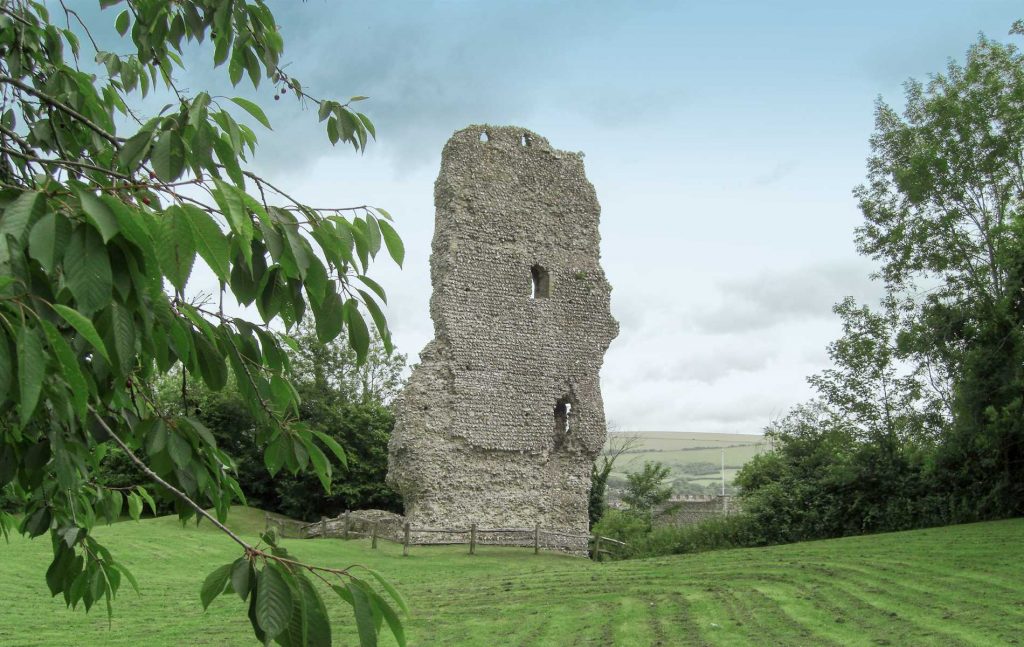
Bramber Castle was at one time considered to be the most important Castle in Sussex. It has a dramatic site on top of a cliff overlooking the River Adur. The castle is very large and was built for comfort rather than defence but it has some nice touches like hidden rooms which spring up into bedrooms and cleverly sunken doors! The keep was added during Edward 1’s reign but originally it was probably just a wooden stockaded tower house.
Bramber Castle is thankfully owned by the National Trust who have done a fantastic job of restoring it. The Castle is set within the grounds of Bramber Park, which is open to the public and has a café. There are good walks around the castle and into the countryside beyond which has stunning views over the South Downs. Bramber Castle is one of only four castles in England to be open during February half term (the other three being Windsor, Dover and Corfe).
The Castle is open in April to October and has full disabled access. There are also many events held here throughout the year such as a Roman Festival, Falconry Display and Cooking Demonstrations plus many more.
6. Carisbrooke Castle

Carisbrooke Castle is a place of great historical significance and was where King Richard III of England lived before his defeat at Bosworth Field in 1485. It was also where Mary Queen of Scots spent her last night before being executed in 1587. The present castle dates from the late 11th century but has been altered several times over the years, most notably by Henry VIII who double its size.
Carisbrooke Castle is owned by the National Trust and is open from April to October. The castle has full disabled access as well as a friendly shop and café serving drinks, teas, cakes and light lunches. There are also many events held here throughout the year such as archery, falconry displays, jousting tournaments plus many more.
7. Chichester Castle
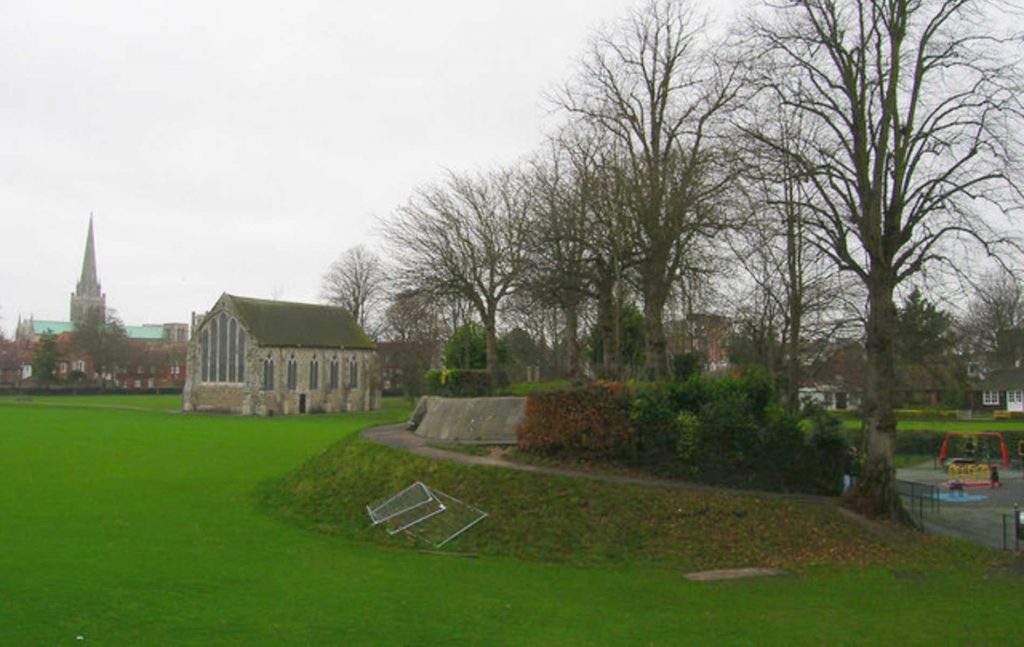
Chichester Castle was built to protect the southern part of the city of Chichester (the first Norman castles in Britain were built so that invaders could not take vital port towns like Portsmouth). The Castle sits about a mile outside the city walls and was built by Bishop Richard de Luci in 1076. The Castle was used as a prison for many years and was also where the kings of England would rest on their way to visit Thomas a Beckett at Canterbury Cathedral. During the Civil War the castle changed hands many times but is now owned by the City of Chichester.
Chichester Castle is now a museum which is owned by the Chichester District Council but managed by English Heritage. The Castle has disabled access as well as a friendly shop and café serving drinks, teas, cakes and light lunches/meals. There are also many events held here throughout the year such as open air plays, falconry displays, plus many more.
8. Oxford Castle

The Oxford Castle is an ancient Norman castle which is located in Oxford, England and it has been referred to as the oldest continuously occupied castle in Europe. It was founded in 1071 by William the Conqueror and it has gone through many changes since then. Today, visitors can explore the grounds and search for clues about its past. They can also learn more about this historic site at special events like celebrations of the Battle of Britain, and they can even explore one of its towers with a medieval-style banquet! The Oxford Castle has played a very important role throughout history, but today it stands as a reminder that we should appreciate our rich heritage while still looking towards the future.
9. Durham Castle
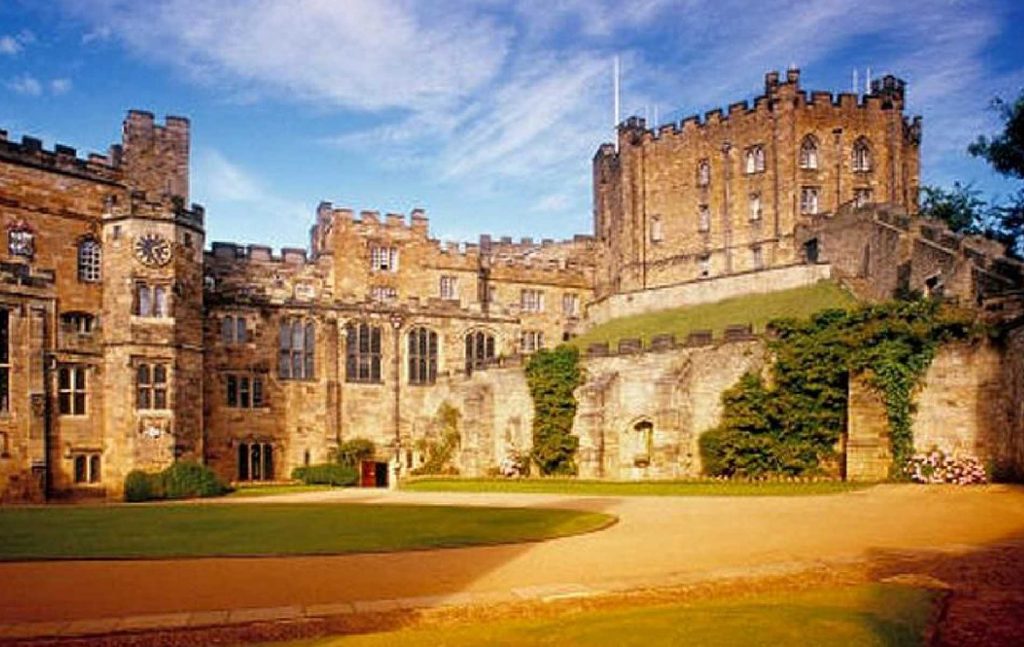
Durham Castle is one of Britain\’s finest medieval castles, uniquely combining extensive defences with unrivalled opulence. This once formidable fortress now stands in splendid isolation above the River Wear with a commanding view of the city below. It has remained an awe-inspiring sight since 1072 when it was first built by Bishop William de Arques for King William I.
10. Bamburgh Castle

Bamburgh Castle is a castle in the North of England, situated atop an ancient fort, overlooking the coastline. It is a Grade I listed building and one of England’s most important historic castles.
The castle was founded during the Iron Age by people whose names have not been recorded. It became home to many powerful kings throughout history, well-known monarchs like William Rufus and Henry II as well as lesser-known rulers like Malcolm III and Cospatrick II. The Norman invasion of 1066 saw King William II murdered at the foot of Bamburgh’s keep.
11. Warwick Castle
Warwick Castle is situated on a bend of the River Avon. The castle is over 1,000 years old and was first constructed by William the Conqueror in 1068 to act as a hunting lodge. It was used as such until King Henry VIII decided it would be more useful if he converted it into a traditional castle; this project took place between 1538-1540 and involved adding six towers, two great halls, garrisons, dungeons and battlements.

12. Framlingham Castle
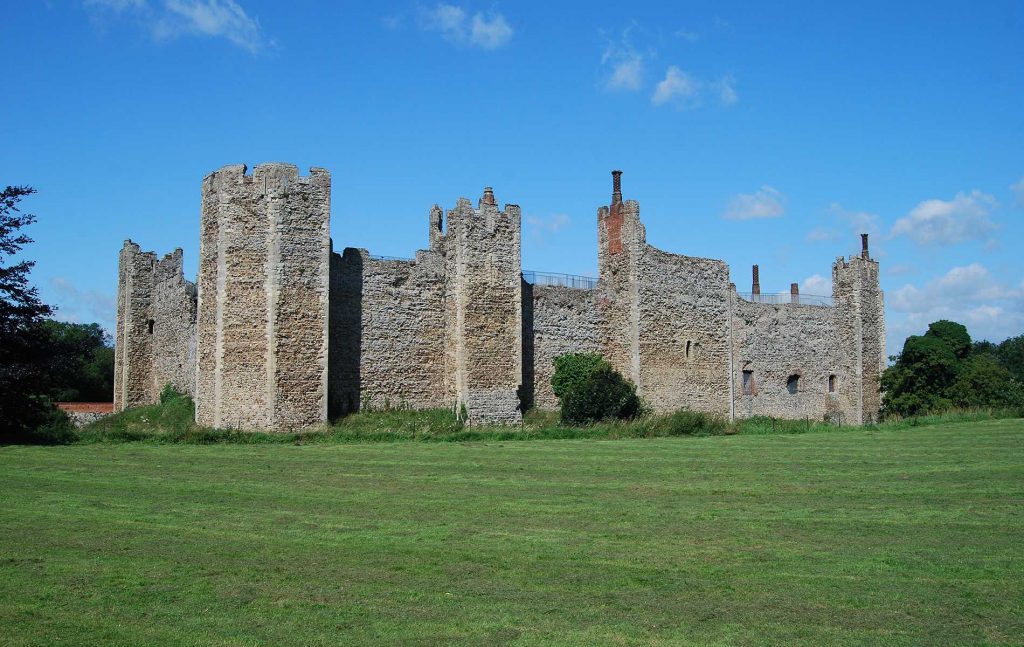
Framlingham Castle is a castle in Suffolk, England. It was built in 1067 by Roger Bigod, who died in 1100. Framlingham has been described as one of England’s most perfect castles.
It is still possible to see the medieval Great Hall with a Norman arch and fireplace, and many of the defensive features that were added by King Henry II still survive intact. The castle was besieged twice, in 1216 and 1322. It is open to the public as a museum.
13. Dover Castle
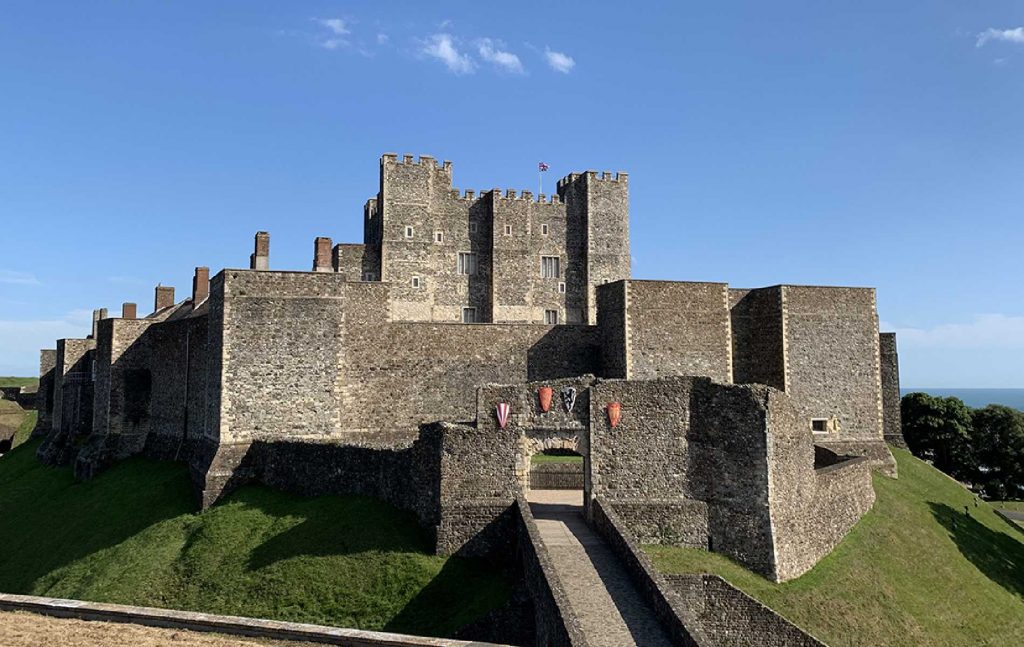
Dover Castle is a medieval castle in Dover, Kent, England. The castle dates from the 12th century and was built above earlier Roman and Iron Age fortifications. It’s one of the main ancient castles still in use today.[1]
The central part of Dover Castle consists of a stone tower keep (or donjon), with two rectangular towers at its corners; these towers may date to 1178 but their distinctive square shape suggests that they were built by Henry III in the mid-13th century. The keep has been strengthened over the years, but was still considered weak in the late 15th century, when it was partially rebuilt with brick. The castle has never had a formidable defence. Instead it lies behind a turning loop and a defensive ditch. In 1216 all three Dover’s castles were taken from King John by the barons during Magna Carta.[2]
It was attacked in 1627 by the Parliamentarians after their sack of nearby Eastry and in 1648 by Lord Fairfax following his attack on Sandwich.
14. Herstmonceux Castle
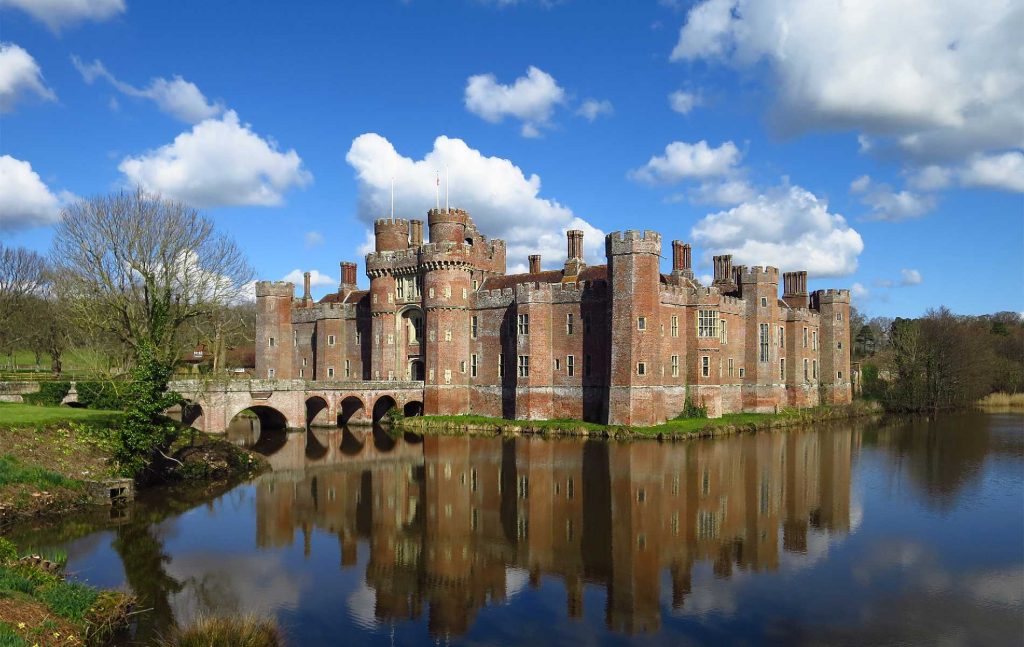
Herstmonceux Castle was built in the 12th century and is still a private residence. In the 16th century, it became known as the “richest dwelling in all Sussex.” The present owner of Herstmonceux Castle is John Charles Wernher.
The castle has been used as a filming location for films such as “Shaun of the Dead” with Simon Pegg and Nick Frost, and “The Young Victoria,” which starred Emily Blunt. Herstmonceux was used as the fictional Downton Abbey in ITV’s costume drama series, “Downton Abbey.”
The castle has also been used as a backdrop in music videos and fashion shoots. It was also used as the location for the British television show “Out Of The Unknown”.
The history of Herstmonceux is closely connected to the Vernons who took residence there in 1249. Subsequently, they made many alterations to the castle, including building some new towers and a chapel.
15. Bolsover Castle

Bolsover Castle is one of the most popular castles in England. Located on a hilltop, it was built by William, Duke of Clarence and later passed down to the Duke of Norfolk. Noted during the English Civil War for hosting an eight-week siege, Bolsover Castle now serves as a museum with many pieces from the 18th-century intact.
Bolsover Castle is very much worth a visit if you get the chance since it gives guests an idea on what life was like over 200 years ago.
16. Rochester Castle

Rochester Castle is a medieval castle in the city of Rochester, Kent, England. It was founded in 1215 by King John of England on the site of an earlier Roman fort and held the only remaining Norman keep in England until its destruction by fire in 1992.
The castle was built to guard a bridge across the River Medway that carried Watling Street over the river. It was located on the south bank of the river, about 230 m (250 yd) south west of the present-day bridge. The fortification initially consisted of a keep, protected by a curtain wall and further defended by a moat and other earthworks. It served both as a royal fortress and as a prison for high-status prisoners, including the future Edward II of England. During the English Civil War it was held in turn by both Royalist and Parliamentarian forces, during which time it was partly destroyed.
17. Highclere Castle
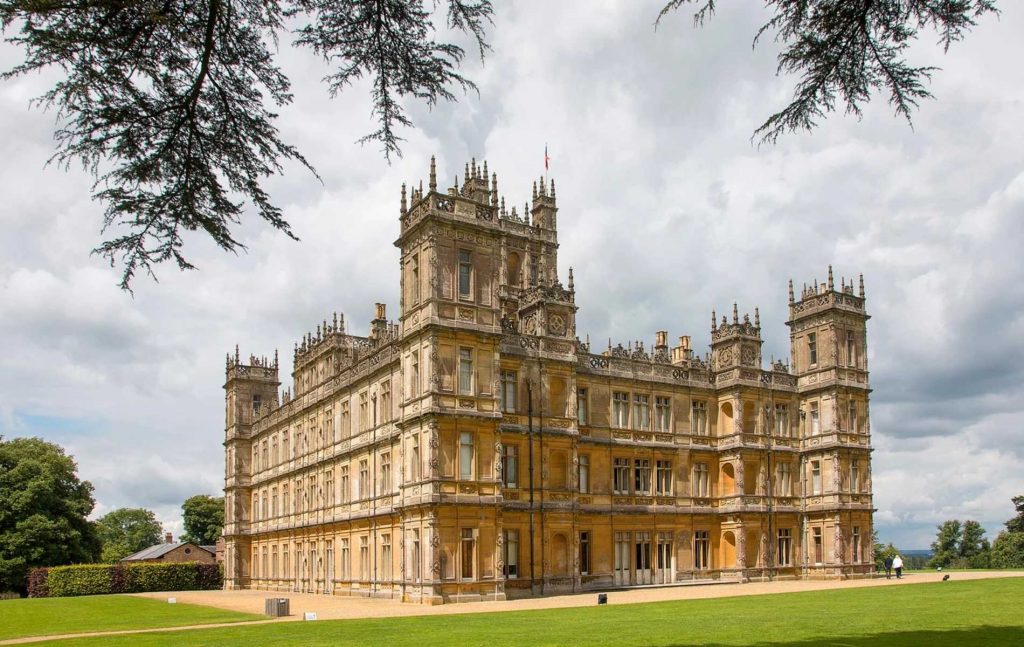
If you’ve watched Downton Abbey, you already know the significance of Highclere Castle. The castle served as a location for filming and is the estate of the Earl and Countess of Carnavon. Highclere has its own original exhibit on Downton Abbey at The Great Hall.
Highclere Castle history traces back to one year after the Pilgrims landed at Plymouth Rock in 1620 AD when Sir Robert Bruce Cotton was born and given land there by King James I. The line of succession fell to the earls, the 1st earl being Sir John Cotton. He was King Charles II’s chief private secretary and a founder to the Royal Society.
The 3rd earl built the current mansion in 1786 AD and it remains to this day. It has also been used as a filming location for Doctor Who.
18. Windsor Castle
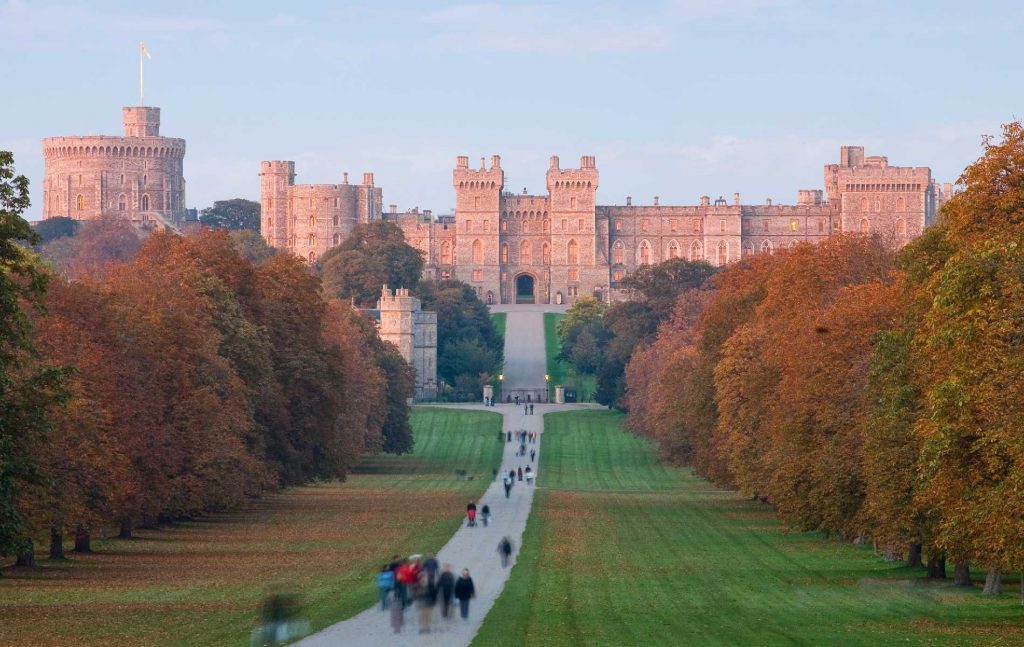
Windsor Castle is one of the official residences of Queen Elizabeth II. It stands on the River Thames at an elevation of 28 metres above sea level. Originally built as a fortress in 1067, it was used for royal residence from 860 to 1603, latterly by King Charles I who escaped during the English Civil War.
The castle is owned by Queen Elizabeth II and was occupied by her throughout her reign. Her first set of official chambers were hosted in a section called the Waterloo Barracks built in 1840; this building was also used by her grandfather King George V. These rooms were then used for Prince Charles until his coronation in 1953. The last of these private apartments became publicly accessible in 2006, and now displays an exhibition called “Royal Retreats”.
19. Highcliffe Castle
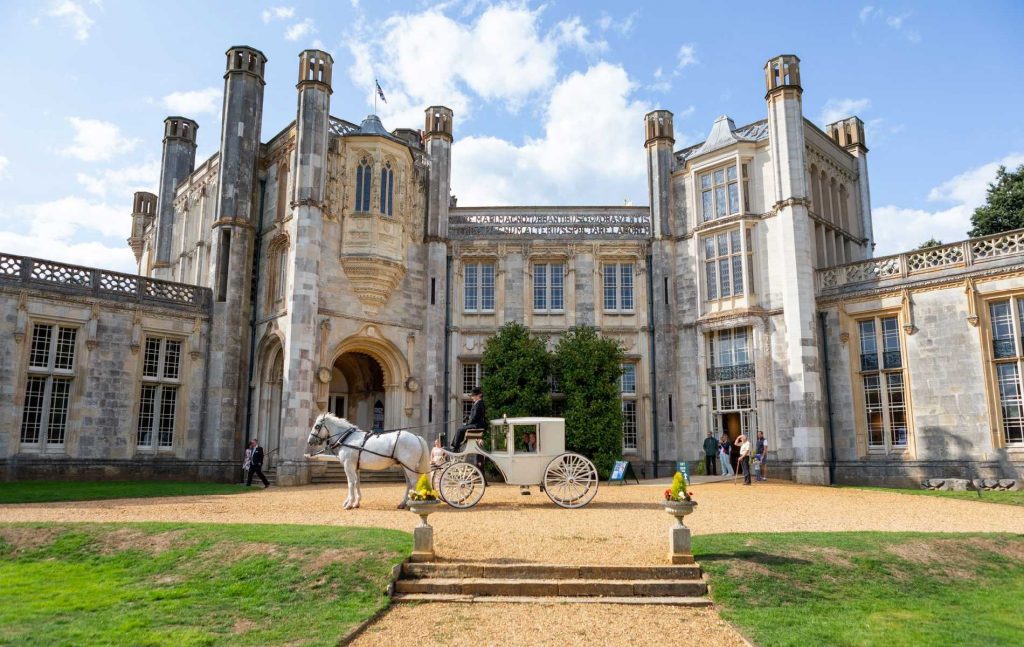
Highcliffe Castle is the home of Earl Mountbatten of Burma and his family. The present castle was built in 1960 by Jeanette Mandeville, the late Earl’s first wife. Before that, it had been derelict for some time. It lies in a beautiful valley on the edge of Christchurch on England’s south coast, about four miles (6 kilometres) from Bournemouth.
The Castle can be found on the A338 between East Highcliffe and Highcliffe, Christchurch, Dorset. The nearest train station to Highcliffe is at Christchurch (4 miles or 6 km from the castle) where there is a shuttle bus service to Bournemouth (one mile or 1.6 km away).
Highcliffe Castle’s origins lie in the 12th century when monks from Winchester built a priory on a nearby site.
20. Leeds Castle

Leeds Castle is a castle in Kent, England. It is located in the village of Leeds (not to be confused with the City of Leeds in the North!), and belongs to the Duke of Leeds. The castle was built between 1119 and 1121 by King Henry I of England for his new Queen, Adeliza.
In the 12th century, Leeds Castle was an important royal residence as well as a fortress. Between 1119 and 1122, Henry I gave Leeds its first charter. Henry’s son, King Stephen, gave the castle to his brother Henry de l’Isle sometime after 1135. In 1278 Edward I took possession of the castle from Aymer De Valence for Queen Eleanor.
If you enjoyed this article you might also like to read about Castles near Brighton
